本文由 空格建筑事务所 授权mooool发表,欢迎转发,禁止以mooool编辑版本转载。
Thanks Interval Architects for authorizing the publication of the project on mooool, Text description provided by Interval Architects.
空格建筑事务所:河北省衡水市南部的衡水湖是华北平原唯一保持沼泽、水域、滩涂、草甸和森林等完整湿地的生态系统,发源于太行山东麓的滏阳河贯行而过。每逢10月中旬至11月初,成批的鸿雁、白琵鹭、浮须鸥等鸟群缓缓飞过上空,抵达衡水湖驻足,再向南迁徙越冬。当地政府希望在一片紧邻衡水湖的自然湿地上修建公立植物园,为市民与游客提供生态旅游、植物科普、公共教育等服务。空格建筑在2019年完成了包含温室展览馆、水生植物科普馆、花房艺术中心、植物研究中心等一系列建筑和景观设计。
Interval Architects: Located in the south of Hengshui City of Hebei Province, Hengshui Lake is the only wetland ecosystem in the Northern China that contains marshes, water, mudflats, meadows and forests. Fuyang River, which originates at the eastern foot of the Taihang Mountains, runs through the lake. From mid-October to early November, flocks of geese, spoonbills and gulls arrive at Hengshui Lake before migrating south to spend the winter. The local government intends to build a botanical garden on a natural wetland adjacent to Hengshui Lake to promote ecotourism and provide a place for botanic study and public education. From 2019-2021, Interval Architects completed a series of buildings including an exhibition greenhouse, a museum for aquatic plants, a botanic art center and a botanic research center.
温室展览馆是系列建筑中的代表,场地位于园区南部,紧邻中心湖水,与湖心岛、花房艺术中心遥遥相对。温室展览馆的面积约3000㎡,规格介于大型温室展示馆与生产性玻璃温室之间。设计打破了旧有概念中植物展览馆的圆形球体印象,在资金紧缺、工期限制等客观因素下,通过标准化的钢构架和幕墙体系,建构出一个糅合现代性与公共性的市民花园。
The Exhibition Greenhouse is the most important and representative architecture among all the buildings in the botanic garden. It is by the central lake and opposite to the Botanic Art Center. With a size of approximately 3,000sqm., the design breaks away from the conventional spherical form which are typically seen among greenhouse buildings. With limited budget and tight time schedule, the design intends to create a contemporary and public garden through standardized steel structure and curtain wall system.
▽总平面图Site Plan
公共性和标志性Publicness and Icon
衡水植物园选址位于衡水市南侧,距离市区大约15-20分钟车行距离,建成后将作为郊野公园和公共文化平台向市民开放。植物园设计需要充分利用基地的丰富自然资源,并在视觉上和服务上形成一定的吸引力,给当地市民创造完整的植物游览体验。
The Hengshui Botanical Garden is located in the south of the city and approximately 15 minutes away from downtown. It will be open to the public as a country park and public cultural platform. The design of the botanical garden shall make full use of its rich natural resources and create a visual and functional appeal in order to provide a comprehensive botanical experience for visitors.
▽公园里的展览馆 The exhibition hall in the park
衡水植物园定位上强烈的公共性和标志性,对建筑形式提出了挑战。作为园区的主体建筑,温室展览馆还面对着不断迫近的开园时间与公众的期待,产生出更加复杂的现实条件:如何在满足场地、造价与工期多重限制的同时,让建筑在场所中自然生长。近现代温室建筑中惯常采用的强调形式感、纪念性的巨型球体构架,或造价高昂的异形体量等建造方式。如果直接从原型出发去设计一个标志性的建筑物,将出现两方面的问题:一方面,穹顶或非线性顶面的结构将占用更大的面积和体量,让整个建筑和周围的湿地景观产生“失衡”的感受;另一方面,非线性的形态对材料、结构和施工提出了更高的要求,需要在生态和植物方面做出牺牲,这违背了设计的最初意图——建筑以植物为主角,自由地介入场地环境,整体向中心湖面延展。
The strong public and iconic nature of the Hengshui Botanical Garden poses a challenge to the architectural form. As the main building of the garden, the exhibition greenhouse faces the ever-looming opening date and public expectations, thus creating an even more complex question: what position and attitude should the architecture takes to meet the constraints of schedule, budget and public expectations of being iconic? It is common in modern greenhouse architecture to build gigantic spherical structures that emphasize form and monumentality or to construct a costly structure with a blobby shape. We intend to avoid designing the exhibition greenhouse from these “prototypical” common approaches for two reasons. Firstly, the dome or non-linear spherical roof structure will take up a larger area and volume, thus creating an ‘imbalance’ between the supposedly small-scale-building and the surrounding wetland landscape. Secondly, the non-linear formal structure will generate higher and stricter requirements on the use of materials, structure and construction, and therefore generate more ecological sacrifices which is against the original intention of the design – a building that intervenes minimally with the environment and makes plants the main protagonists.
▽在自然中生长的展馆 A pavilion that grows in nature
设计的起点,更多根植于对气候条件与场地适应性的回应,而不是为了形式而创造形式。整个建筑找形从场地设计出发,以单元化的结构模块有机结合。混凝土柱础架起的倒四角锥形钢架结构,经玻璃幕墙包裹,伫立于红砖基座之上,与不远处的“红砖塔”花房艺术中心遥相呼应。
The starting point of the design originates from a response to climatic conditions and site adaptation, rather than intending to create an eye-catchy form for the form’s sake. The entire building is composed of several modular structures that repeat itself to fit the site. The inverted tapered steel frame structure with concrete column bases and wrapped in a glass curtain wall stands on a red brick base which echoes the nearby botanic art center, which is also named the Tower of Bricks.
▽概念演变 concept evolution
椎体钢架不断复现组构,迭变成为折叠的屋顶,如同连续的棚屋于湿地之上铺陈。正交网格和钢架强烈的几何形式和体量与轻盈自由的湿地形态,产生了形式上的张力。开园后在植物的掩映下,温室展览馆将成为植物园的独特视觉标识。
The vertebral steel frame repeats itself and transformed into a folded continuous roofscape that floats above the wetland. The strong geometric forms and volumes of the orthogonal grid and steel frame create a formal tension with the light and natural form of the wetland. Together with the rich plantation under the glass roof, the exhibition greenhouse intends to become a distinctive visual identity for the botanic garden with plants as the focus of the architecture.
▽连续的三角钢构屋顶 Continuous triangular steel roof
双重尺度 A Two-Scale Dimension System
温室建筑最重要的使用者是“居住”在其中的植物。温室展览馆中包含热带植物区与沙生植物区,沙生植物较为低矮,被单独布置至南侧的单元空间内,以满足使用面积、温湿度与土壤需求的不同所带来的内在差异。热带植物高度变化较大,椎体单元也顺应了其中植物配置的方式——结合屋顶结构中间高四周低的空间状态,高耸的乔木被布置在结构体中央,两侧则种植低矮的四季花卉。
The most important “users” of the greenhouse are the plants that ‘inhabit’ it. The exhibition greenhouse contains a tropical plant zone and a psammophyte zone. The psammophytes are lower and are arranged in a separate area on the southern part of the building in order to meet the specific requirements on area, temperature, humidity and soil. The pyramidal shape of the structure offers a unique way of planting in respond to the wide variation in the height of the tropical plants. Tall trees are placed in the center of the pyramidal structure and low seasonal flowers and bushes are planted on four sides of the structure which has a lower and descending height.
对于温室的另一个使用者——游客和园区工作人员,游览体验和视野变化成了设计上最需要考虑的因素。为调和建筑结构、植物与人体行为之间的互动关系,建筑师细化出两套尺度系统:18m高的主体结构贴合植物;4-6m不等高的盒体、红砖矮墙、混凝土柱基,更加贴近于人体尺度。内置的盒体嵌入建筑“边界”,使两套尺度系统相互咬合,产生出介入室内外空间与两大功能区之间的过渡空间。盒体由实木板材贴面,作为辅助功能的承载体,承载纪念品商店、游览休憩、办公管理等功能的需求。
For the other group of greenhouse users – visitors and the managing staff, the spatial experience and constant change of views become the main design considerations. Two kinds of scale-systems were designed in order to coherently manipulate the inter-relationships between structure, plantations and the human behavior. The 18m-high main steel structure offers a scale that accommodates the plantations while the 3-to-4m-high wooden boxes together with the low masonry walls and concrete columns offers a system more relative to the human scale. The space-boxes are placed on the periphery of the building and allows the two-scale systems to intersect with each other and create a transitional buffer space between the interior and exterior spaces. The space-boxes are cladded with wood panels and perform as a carrier for secondary and service functions such as souvenir shops, management offices, washrooms and storages.
分散的盒体打破了将辅助功能完整收束于一处的传统布局方式,与整体结构产生出更加有机的关联,提供了更多观赏与驻留的可能性。室内最外圈砌筑的红砖矮墙掩蔽了外围的连续管沟与空间端部的设备设施,与红砖基座融为一体,结合室内外高差与植物,在视线高度内营造出纯净的室内空间。
Opposed to the conventional way of placing all ancillary functions in one place, the scattered space-boxes create a more organic and coherent relationship with the entire structure and offer more possibilities in terms of spatial experience and viewing plants. The low red masonry walls wrap around the entire interior boundary of the building and hides the mechanical piping system and equipment. It blends visually well with the red brick bases on the facade and effectively generate a visual barrier that separates the interior and the exterior spaces of the architecture, particularly on the space below eye level.
▽红砖矮墙与红砖基座融为一体 The red brick low wall blends in with the red brick base
展馆的主入口设定于东北侧,迎向园区人流。入口单元消减了外玻璃幕墙的设置,但保留了完整的椎体钢架。在明确外部路径主体性的同时,产生出可荫蔽游客的灰空间,提供给市民享受户外自然氛围的休憩区域。主入口拥有园区中较佳的观景位置,常有游客于此处落座,安静等待日落景色。除主入口外,建筑还设有三个次入口,两个位于西侧,顺台阶而下能够缓缓走近湖面,一个则设置于南侧与园区环路相衔接。
The main entrance of the exhibition greenhouse is on the northeastern part of the building and faces the main pedestrian path of the park. The entrance is formed by a pyramidal steel structure unit without glass claddings. The pure skeleton structure offers a buffer space that provide adequate shading and allows visitors to take a rest and wait for the sunset scenery of the botanic garden. In addition to the main entrance, the building has three secondary entrances: two on the west side with paths leading to the lake and another one on the south side which connects with main pathway of the garden.
▽展馆入口 The pavilion entrance
植物之间,蜿蜒的小径首尾相连形成了观赏环路。小径由条石拼砌成,与两旁的植物无任何屏障阻隔。体验线性地展开,游客能够从不同的空间关系与不断变化的视角对植物进行观察。“木盒子”隐藏在植物中,提供了可供休憩的节点。游客可以选择在其中穿行,或缓步向上,在被打造成为观景台的咖啡阅读区停驻。
The main viewing route in the exhibition greenhouse is formed by the stone-paved path that meanders between the plantations. The setting of the main viewing path forms a unique relationship between visitors and plants and offer constant-changing visual experience between the plants and the architecture. The wooden space-boxes that scatter around the plantations offer a secondary space for experiencing and interacting with the plantations. Visitors may go through them or go above it and use it as a public platform that offers a three-dimensional viewing experience.
▽条石拼接的观赏园路 Stone splicing ornamental garden road
建筑的材料逻辑与人体行为有着内在的统一性:红砖基座与石板小路提供了可供游移的路径,木质的座椅与盒体构筑了游客休憩的空间。视线的层次与渗透串联起内在的风景,观赏本身也成为了展览的一部分。
The materiality of the architecture forms a coherent system with the human behaviors. The red masonry walls and stone pavements provide circulation paths while the wooden seats and boxes create spaces for visitors to rest. The layering and permeation of views connect the inner sceneries of the plantation landscape and make the action of viewing itself becomes part of the exhibition.
理性的结构体系A Rational Structural System
自1851年世博会的“水晶宫”起始,温室结构被应用于展览馆建筑中,树立起温室展览馆中玻璃与钢的材料印象。这种预制建造方式显示出其经济性与便捷性的优势,装配式构件有效压缩了建造时间与施工难度。在衡水植物园温室展览馆中,重复出现的椎体结构使用了同样的模具与参数,标准化建造提升了施工效率,有效降低了工程造价。此外,河北的冬天常现落雪,坡屋面保证了足够的倾斜角度供积雪滑落,有效应对了建筑排水问题。锥体结构交界处设置的落水管,可将融化的雪水汇入集蓄水池中。
Since the construction of the “Crystal Palace” at the 1851 World’s Fair, glass and steel was often used as the main materials to construct exhibition halls and they have become the “typical” impression of exhibition greenhouses. The prefabricated construction method has proved its advantages in terms of economy, speed and convenience. Construction schedule and difficulty were effectively reduced the prefabricated assembled components. In the Hengshui Botanical Garden exhibition greenhouse, the repeating pyramidal steel structures use the same moulds and parameters. Standardized construction methods enhance construction efficiency and effectively reduces the cost of construction. In addition, as snow often falls heavily in Hebei’s winter, the steep sloping roof of the pyramidal structure ensures a sufficient angle for snow to slide off and effectively resolves the building’s drainage problems. The water pipe at the junction of the pyramidal structure allows the melting snow water to be collected and drained away.
▽结构分析图 structure diagram
▽屋顶结构 Roof structure
结构构件由建筑师主导完成,抽象的几何体剥离了复杂的装饰,混合结构的做法确保了室内空间不受零散柱体的干扰。13个梯形混凝土柱础落于红砖基座上,作为支座支撑起四角椎体系屋架,形成整体纵向三段式的分划,将受力逻辑具象成为一整套清晰的结构语言。
The structural elements are abstract and pure geometries without complex ornamentations. The repeated pyramidal structure forms a column-free interior spaces with minimal vertical interferences. Thirteen trapezoidal concrete column bases sit on top of the red masonry plinths and perform as footings that support the pyramidal roof-frame structural unit. The architecture takes a form that visualizes the force-transmitting logic of the building’s structure.
▽底部的水泥基座支撑倒锥形的几何体 A cement base at the bottom supports the inverted taper geometry
主体结构上覆盖的大面积玻璃幕墙使充足的日光成为了可能,玻璃自身所具有的透明性削弱了室内外的空间界限,展现出轻盈的通透感。沙地和热带植物对光照时间、角度有较高的要求,在幕墙内侧设计了隐形遮阳卷帘和补光设备,以调节温室光照环境。室内灯具、环境控制系统等设备管线顺应结构体排布,消隐在桁架之中。我们试图在最大程度满足造价限制的同时,将空间、文化、美学与生态技术等要素统一在建筑之中。
The large glass curtain wall system covering the entire building allows for maximum natural light. The transparency of the glass itself blurs the spatial boundaries between interior and exterior and thus reveal a sense of lightness and permeability. Shading blinds and auxiliary lighting equipment are integrated into the curtain wall system to regulate the light environment of the greenhouse in order to meet the high requirements for light hours and angles for desert and tropical plants. Mechanical systems such as indoor lighting, environmental control systems and other supplementary equipment and piping are arranged along and concealed themselves the roof structure beams and trusses. We attempt to put together coherently the building’s spatial, cultural, aesthetic, and eco-technical elements while meeting the cost constraints.
▽玻璃幕顶 Glass curtain against
▽热带植物可以从玻璃幕墙吸收阳光 Tropical plants absorb sunlight from the glass curtain wall
为谁而建:介入与分离的思辨Built For Whom: The Reflections on Intervention and Separation
自古罗马“镜式温室”发端,温室经历了从欧洲木石结构的“橘式温室”、19世纪工业革命后玻璃与铸铁搭建起的公园温室的演变。直至现代,温室展览馆则更多被赋予了教育与研究的社会意义,引导着人们对于自然资源的关心与呵护。
Beginning from the ancient Roman greenhouses, greenhouse architecture has undergone evolutions from the European wood-stone greenhouses to the iron and glass garden greenhouses built after the industrial revolution of the 19th century. In modern times, greenhouses have been given more social dimensions which include education, research, and guiding people to pay attention and take care of the Earth’s valuable natural resources.
纵观整个园区,很难想象这里曾饱受工业发展的侵蚀,仅仅在数年前,衡水市域的污染程度仍处于全国倒数十名之列。技术的发展使人们常常忘却在自然面前应有的谦逊姿态,剥离自然的建造,往往需要以牺牲生态环境为代价。现代社会快速的城市化发展与生态环境资源之间产生出的矛盾,不断促使我们反思建筑的生态意义。
With the opening of the Hengshui botanic garden, it is hard to imagine that the place has suffered greatly from the industrial developments. Only a few years ago, Hengshui city was among the country’s bottom ten in terms of pollution levels. Technological developments have made people forget the humble gesture mankind should have in front of nature. Constructions that abused our natural resources often lead to the sacrifice of the planet’s ecology. The contradiction between the rapid urbanization of modern society and the protection of natural resources of the earth’s ecological system continues to prompt us to reflect on the ecological significance of architecture.
建筑与自然的关系,引发出对于 “为谁而建” 的思辨:在这个项目中,植物并非建筑的他者,也不应为配景一般的点缀。我们希望,人与植物之间的可以呈现互文的关系,而建筑所处的位置更近似“介入”(In-Between)而非“分离”(Division)。激发人们去观察、去体验,进而感受到与自然的紧密关联,是建造的应有之义。
The relationship between architecture and nature leads to the question of “For whom are we building?” In this project, plants are not an alternative to architecture, nor should they be a colorful addition to the architecture. We hope that there will be an interconnected relationship between people and plants and that architecture will perform as a role of “in-between” than “division”. To inspire people to observe and experience a closer connection with nature is what architecture attempts to achieve.
▽一层平面 Plan – level 1
▽屋顶平面 Roof plan
▽立面图 elevations
▽剖面图 sections
▽剖面细节 Detail sections
▽展馆模型 Model pictures
项目名称: 衡水植物园温室展览馆
完成年份: 2021
项目面积:3113平方米
项目地点: 衡水
设计公司: 空格建筑事务所
公司网址: www.interval-architects.com
联系邮箱: media@interval-architects.com
主创设计师: 高亦陶,顾云端
设计团队: 高亦陶、顾云端、岳泽兴、胡仙梅、陈璟、黄晋、罗迅、廖晨阳、付雨、张羽、方寒柒
客户:衡水植物园
摄影师: 值更
Project Name: Hengshui Botanical Garden Greenhouse Exhibition Hall
Completed Year: 2021
Project area: 3,113 square meters
Project location: Hengshui
Design Firm: Interval Architects
Company website: www.interval-architects.com
Contact email: media@interval-architects.com
Chief designer: Gao Yitao, Gu Yun
Design team: Gao Yitao, Gu Yun, Yue Zexing, Hu Xianmei, Chen Jing, Huang Jin, Luo Xun, Liao Chenyang, Fu Yu, Zhang Yu, Fang Hanqi
Guest: Hengshui Botanical Garden
Photographer: ZHI Geng
“ 标准化的钢构架和幕墙体系,建构出一个糅合现代性与公共性的市民温室花园。”
审稿编辑 Ashley Jen
更多 Read more about: 空格建筑事务所


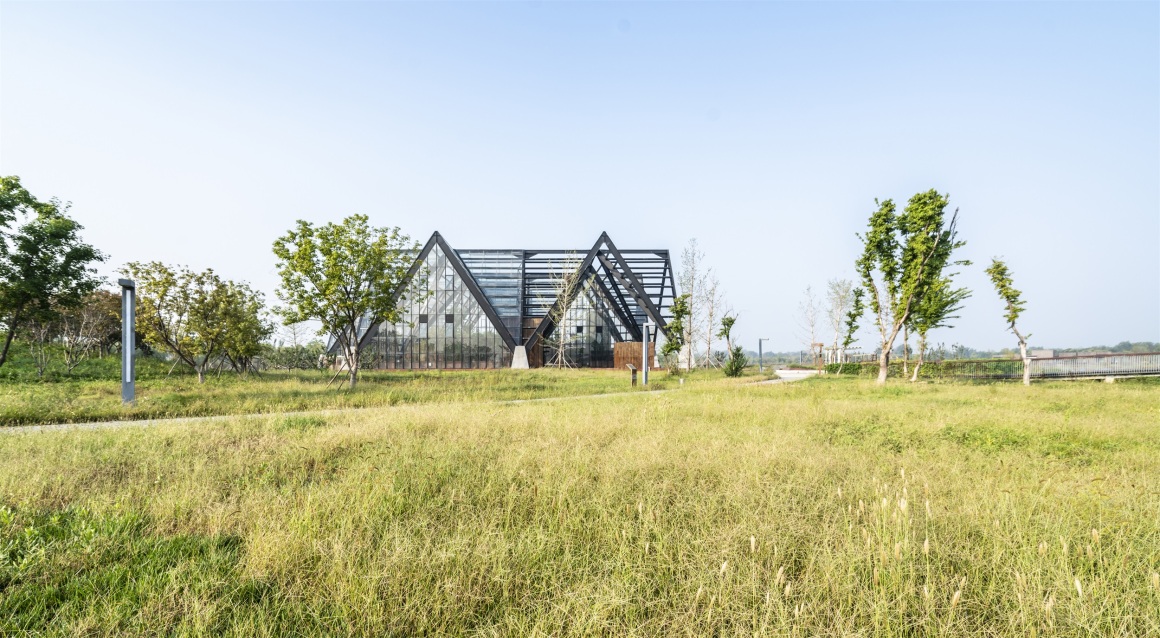


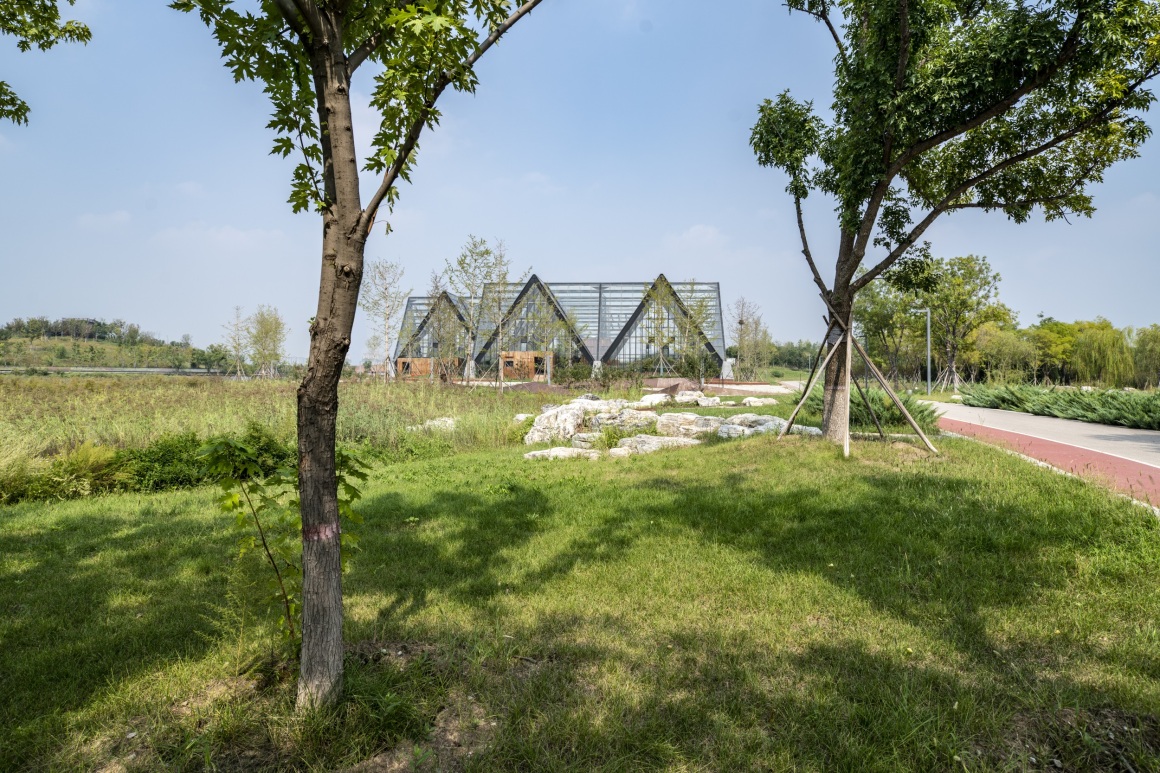

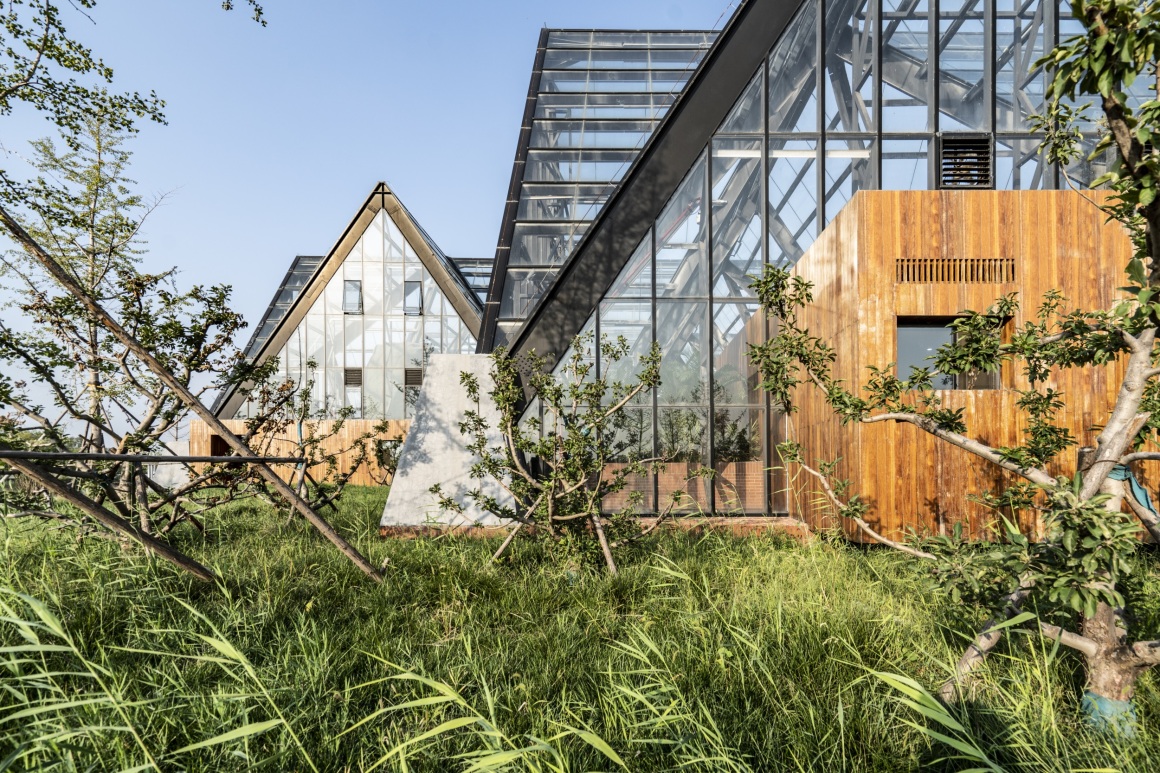
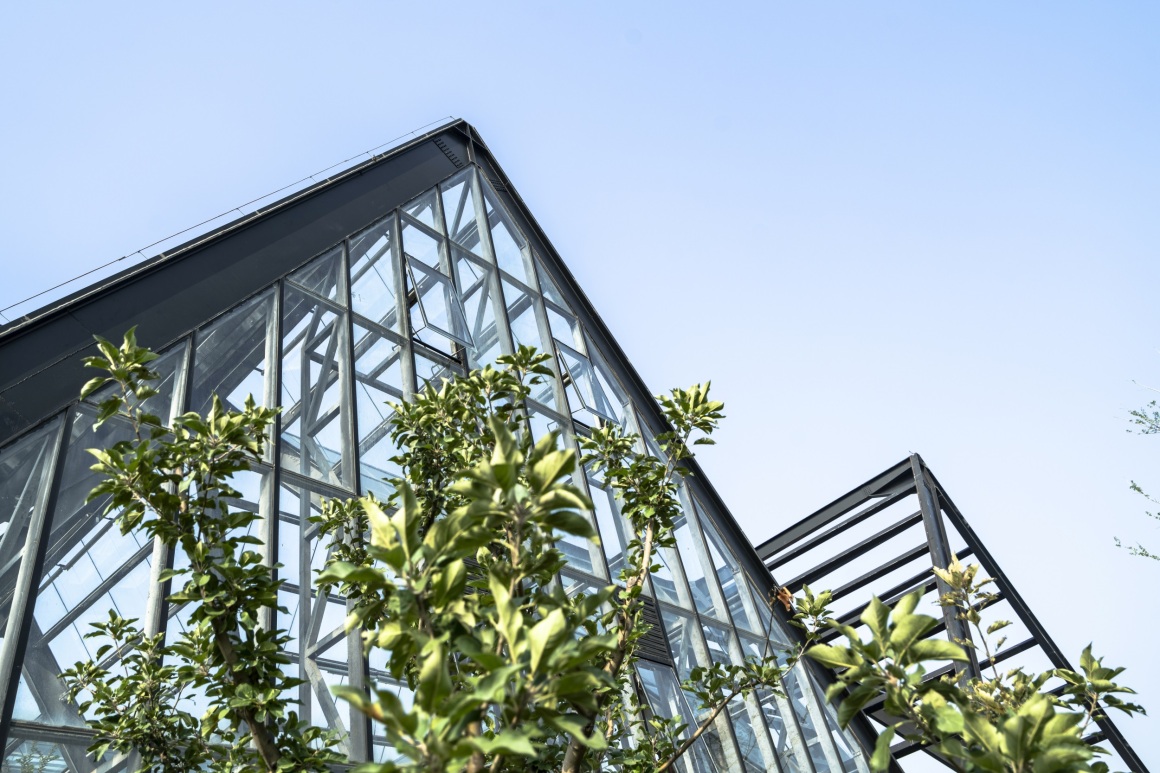



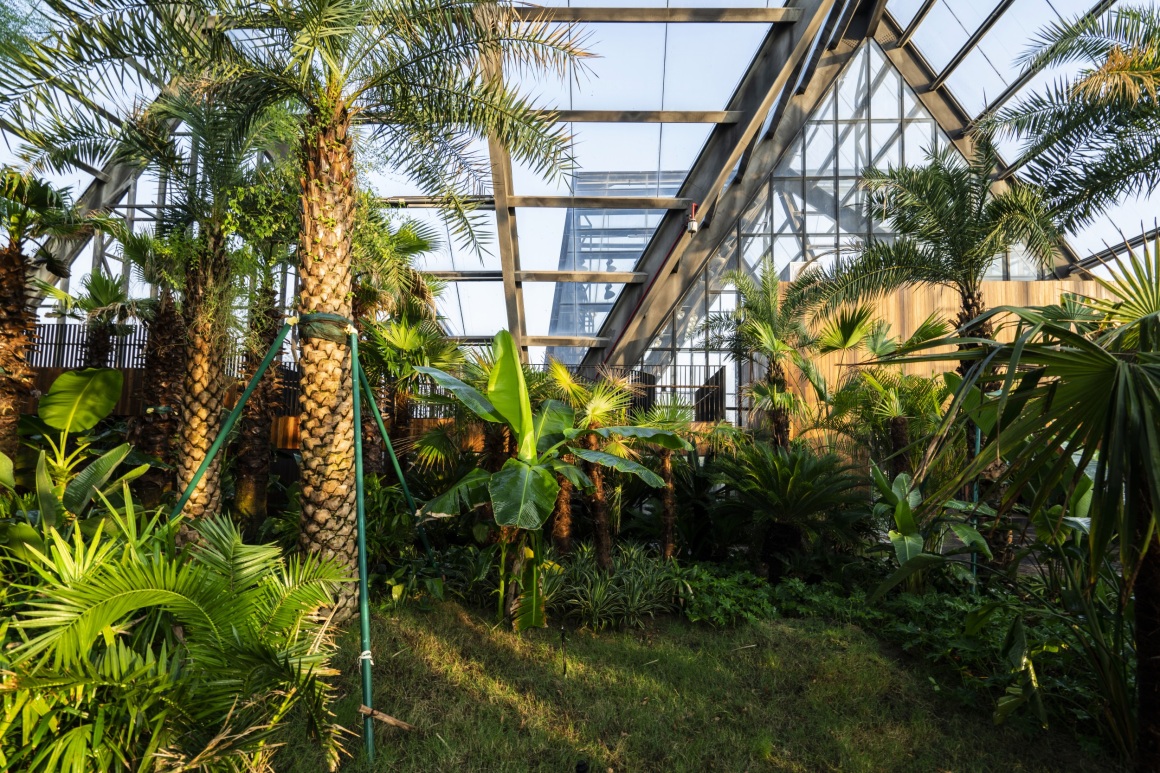
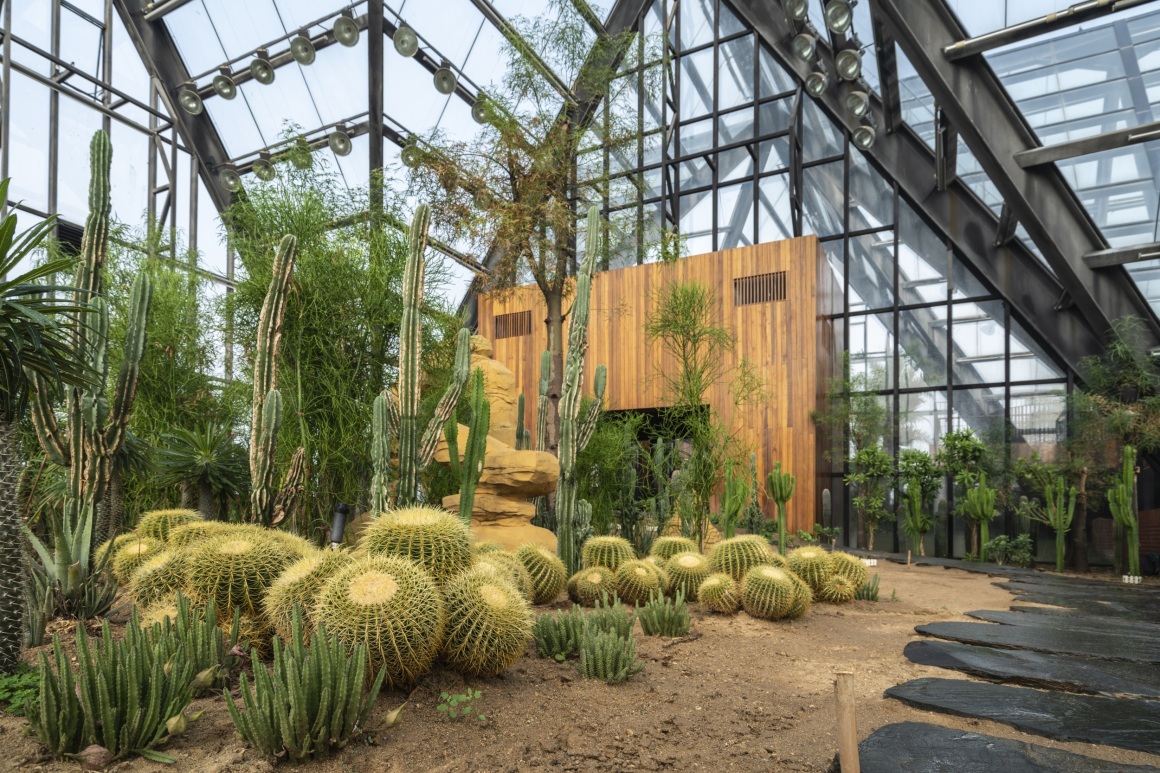

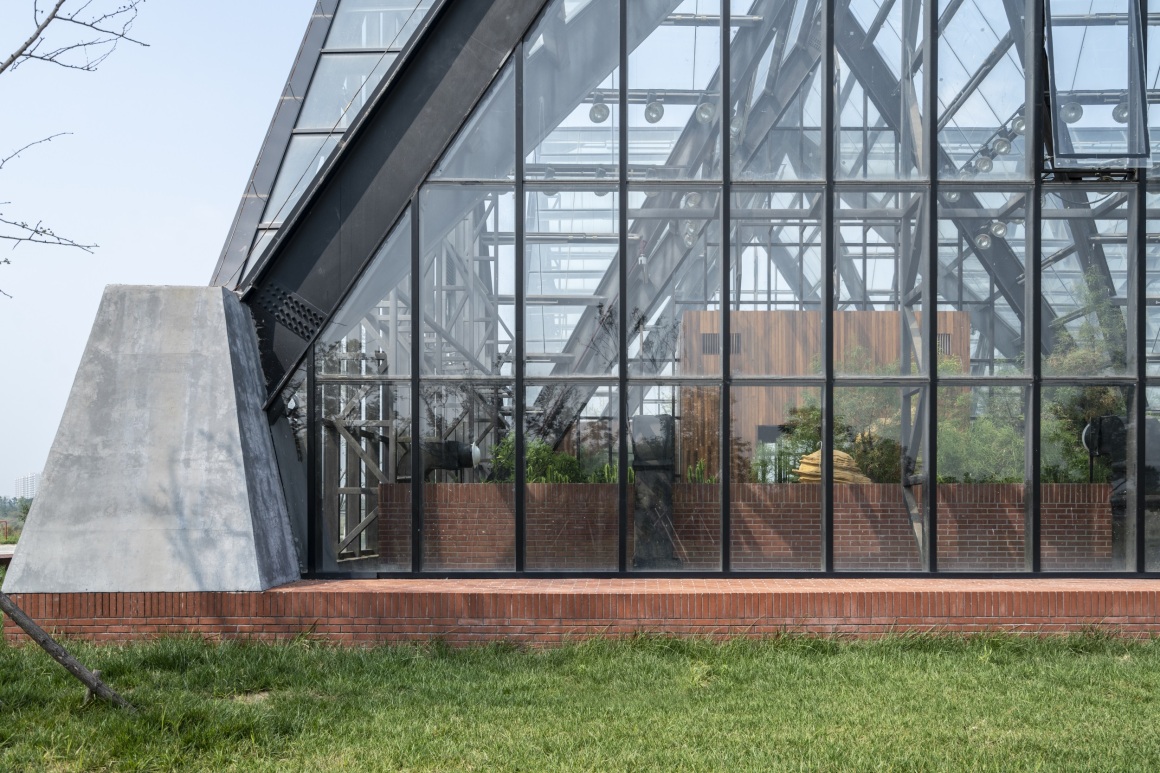

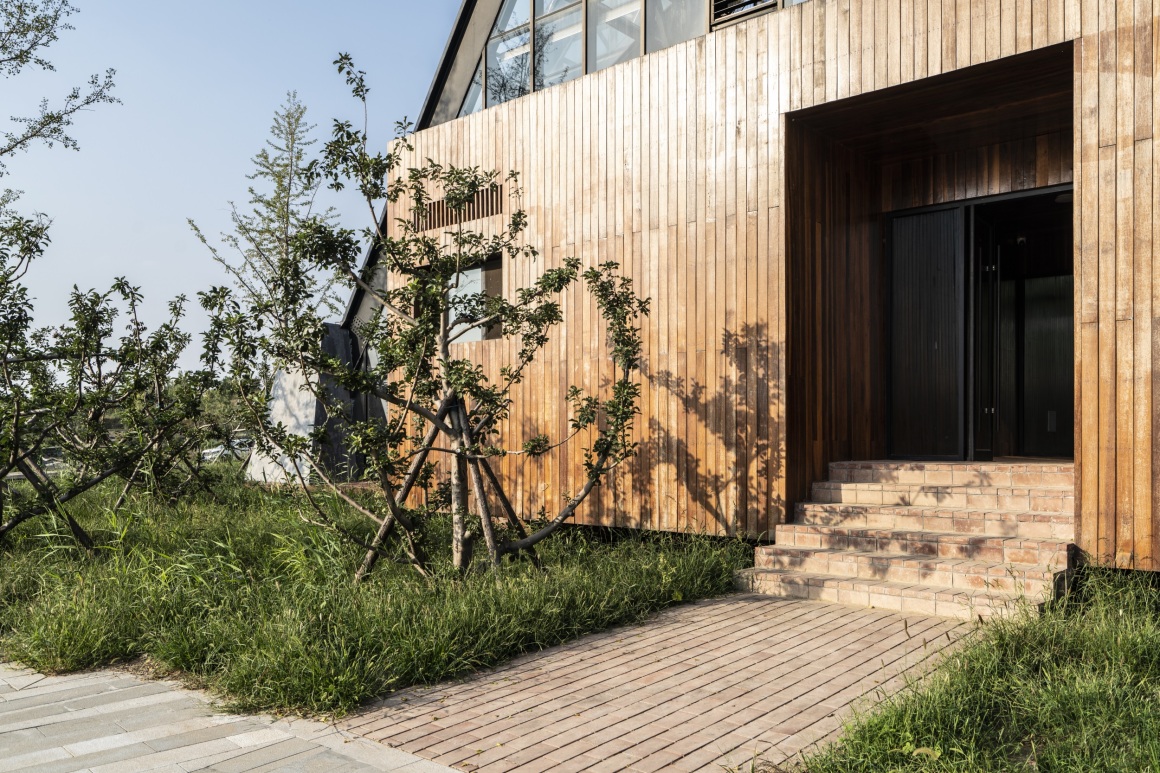






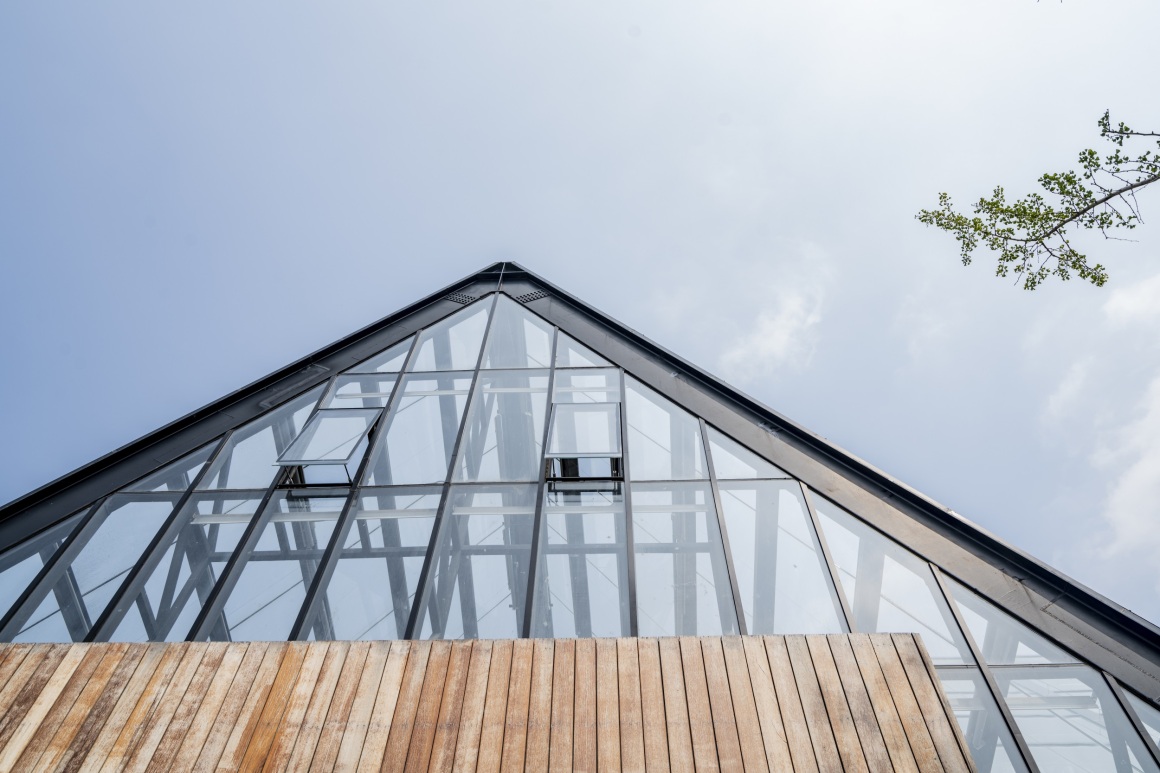

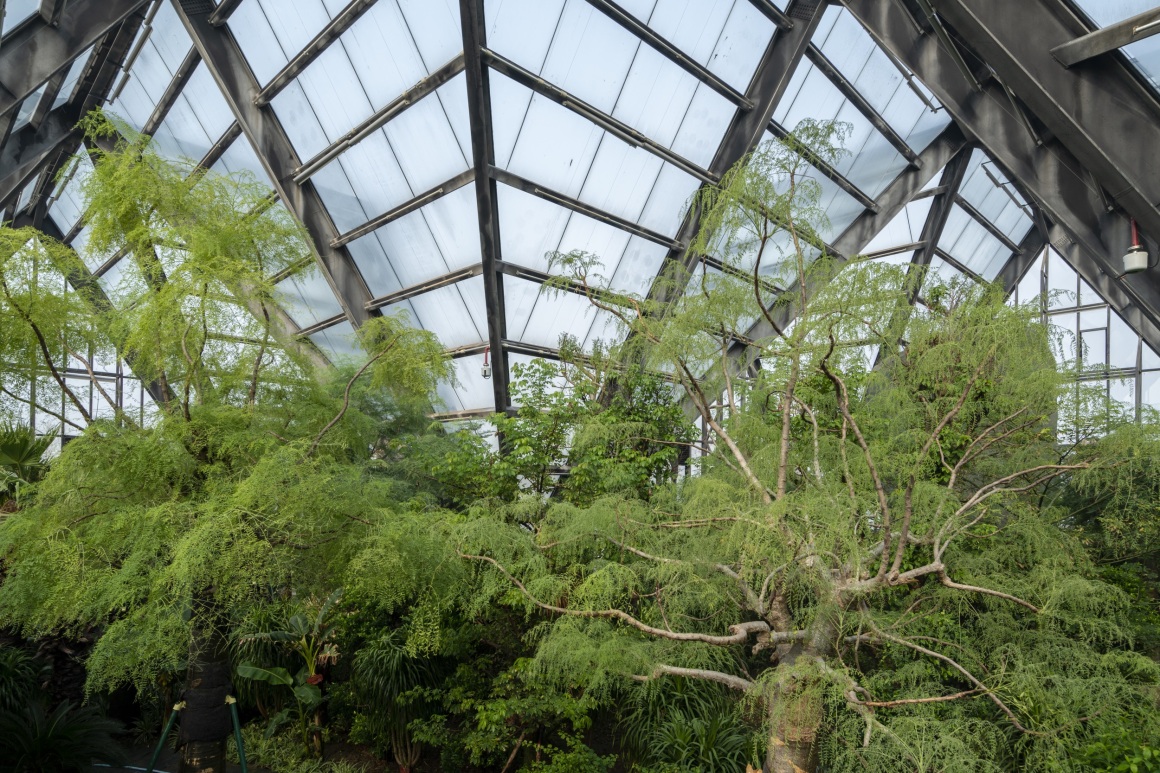


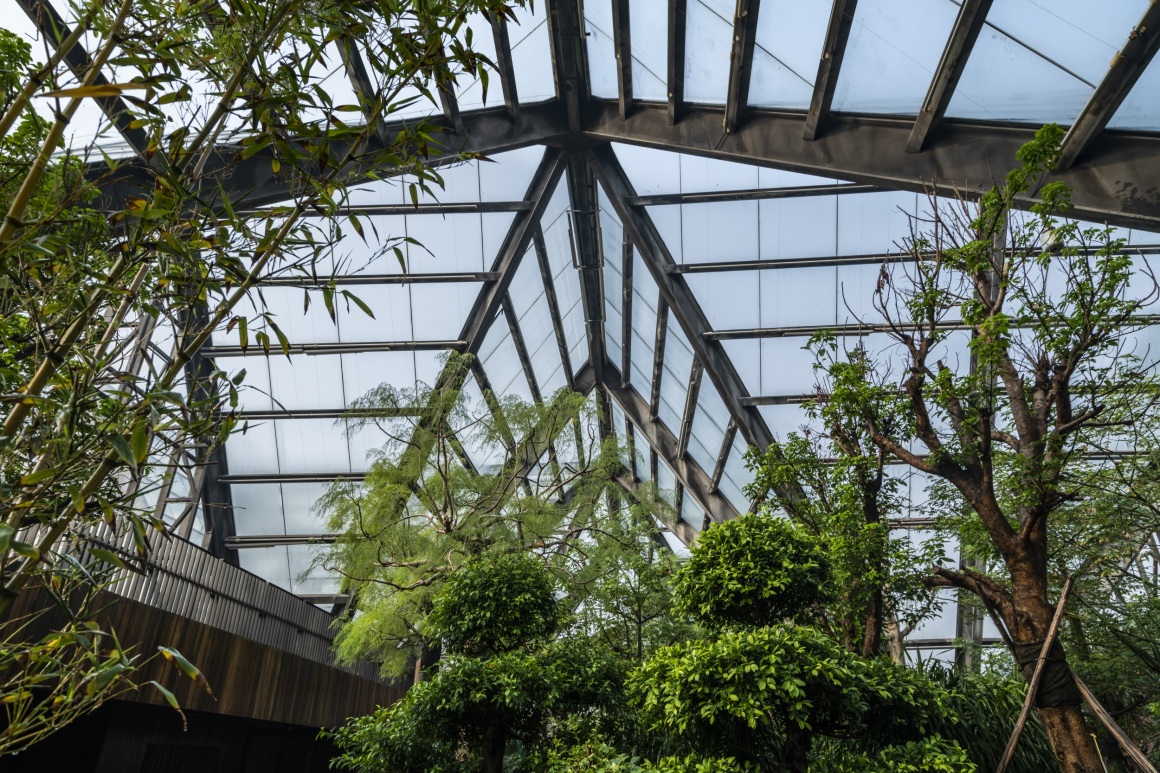

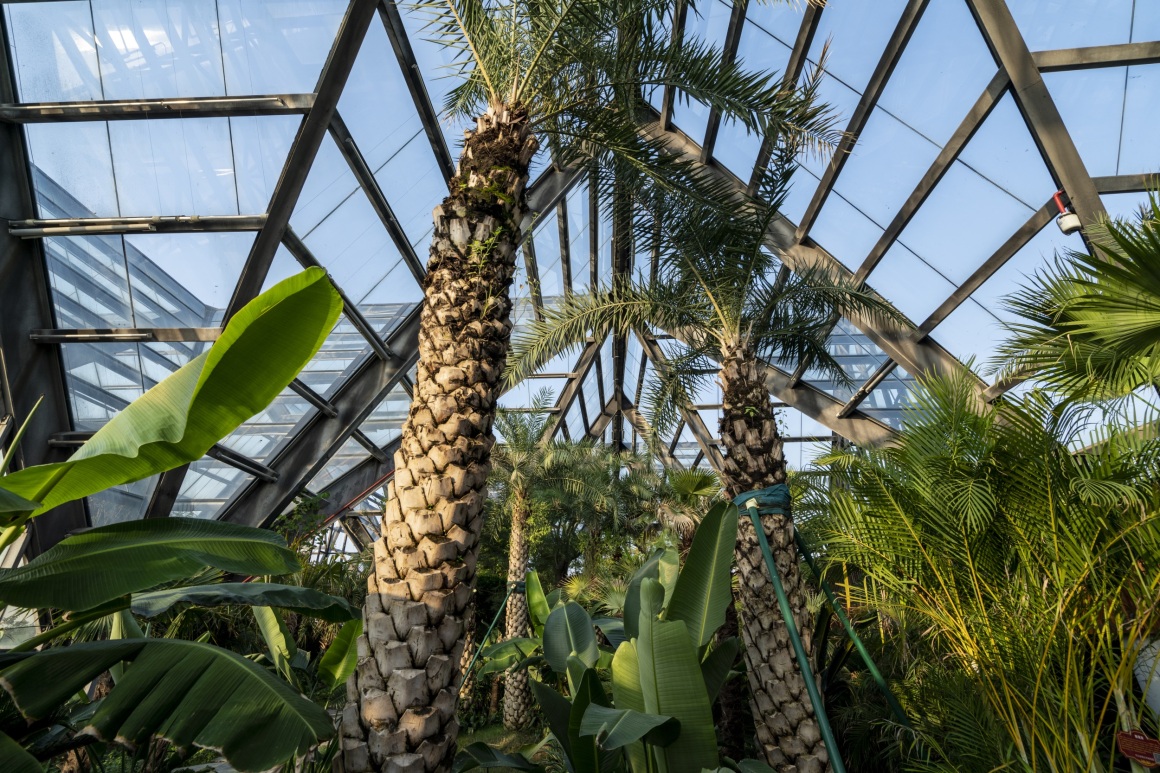





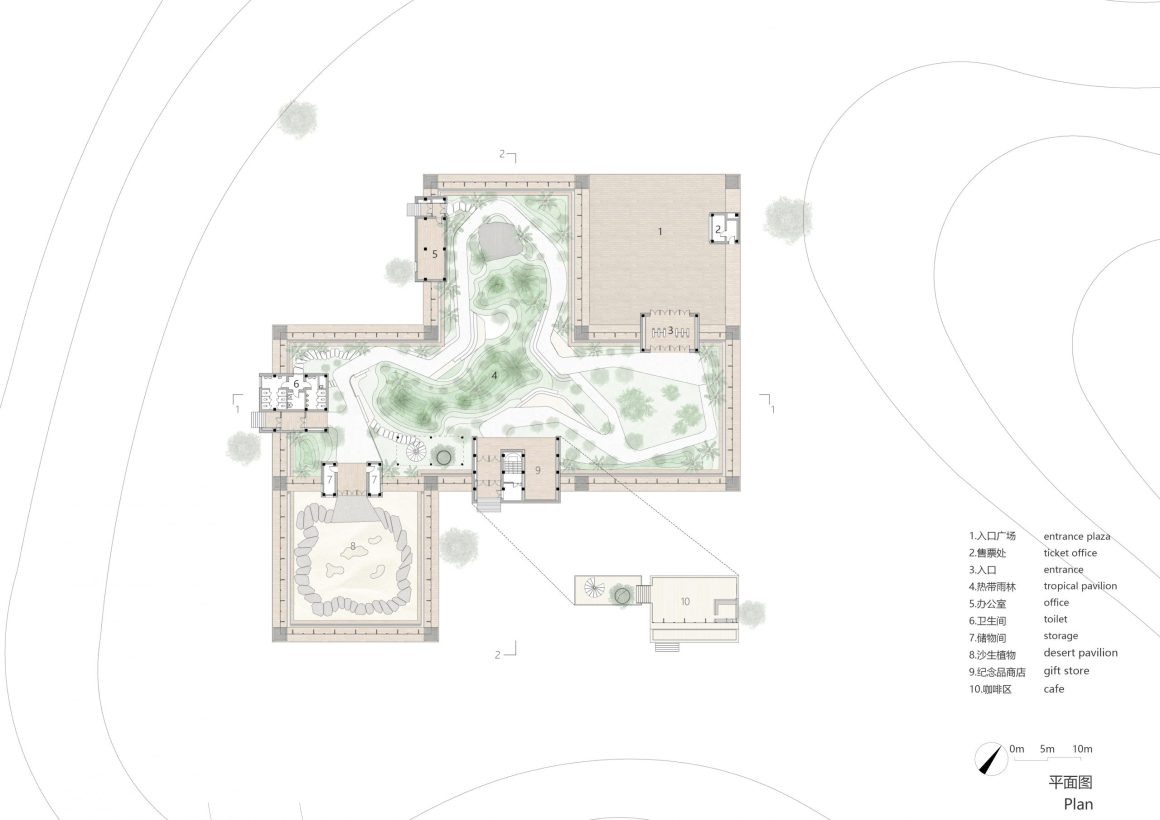



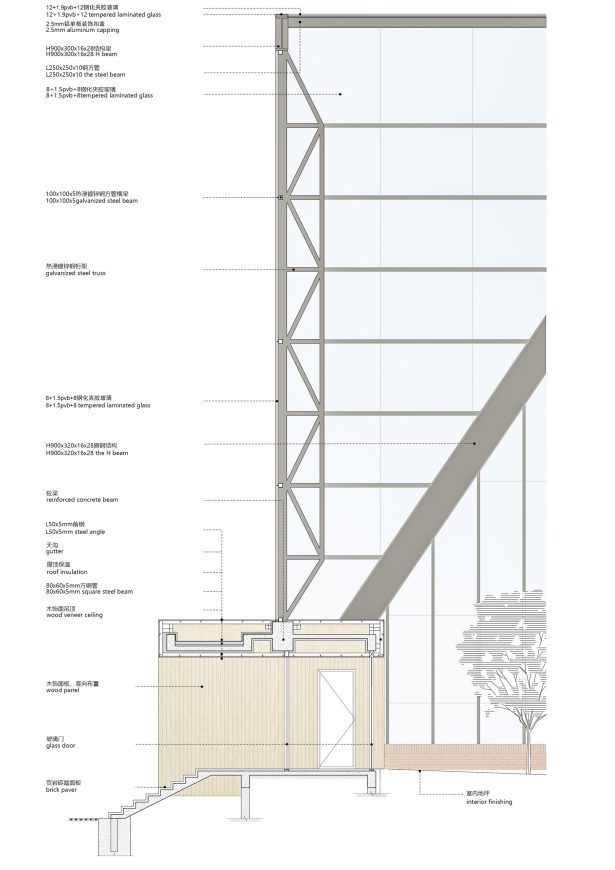


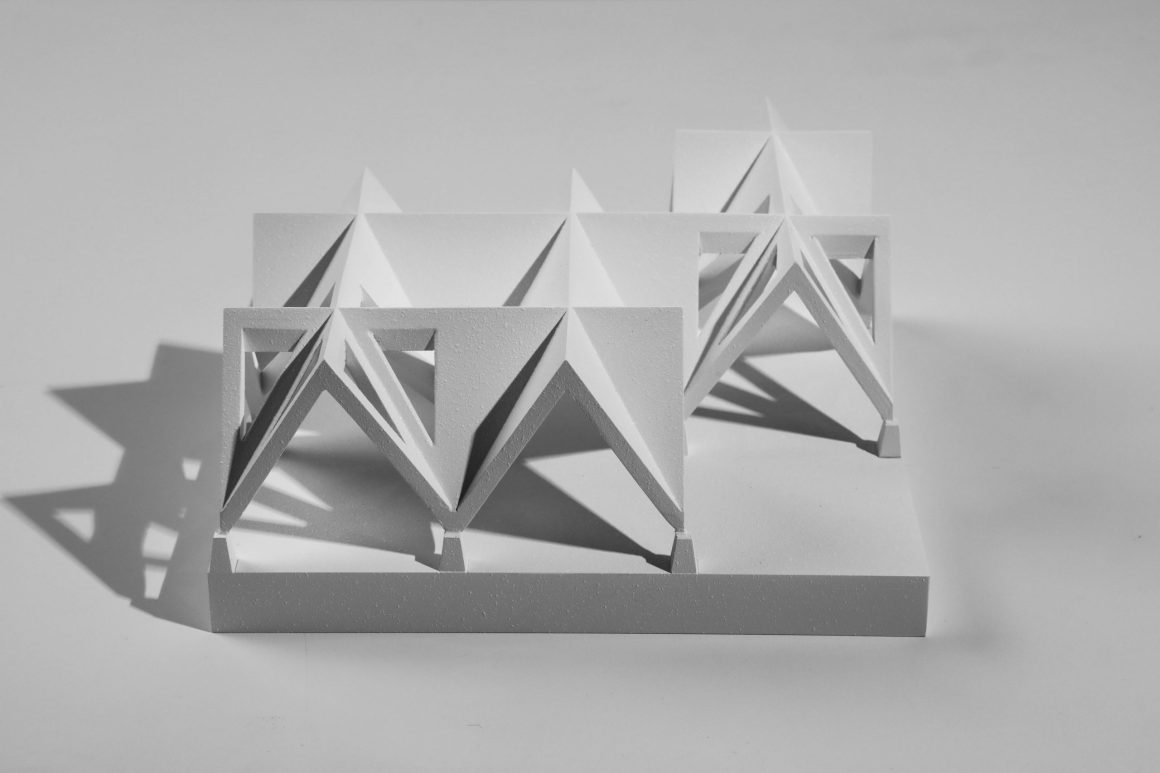

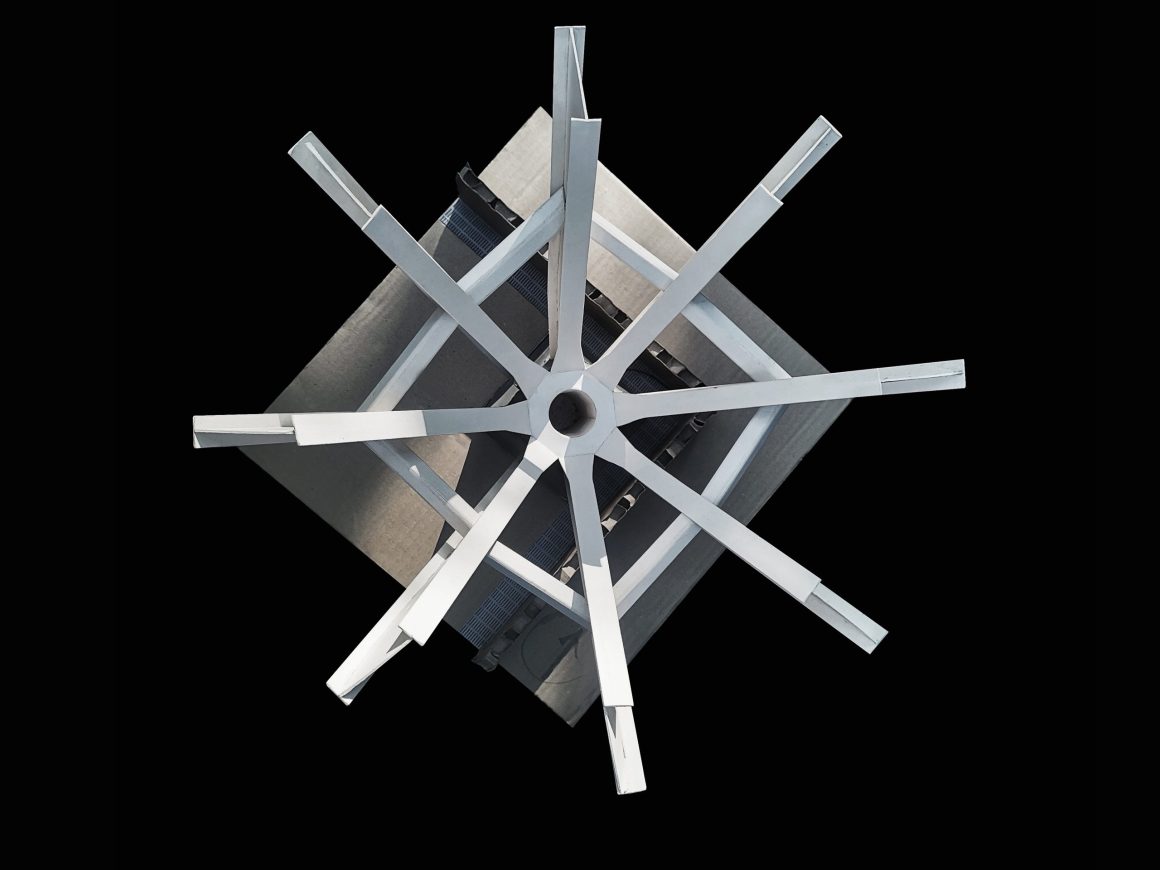


0 Comments